Abstract
After examination of the drugs used by traditional practitioners in Côte d'lvoire, nine formulas prescribed in the treatment of African human trypanosomiasis (AHT) were selected for investigation. These formulas made use of 40 plants, 16 of which were studied because of their properties, as described in the literature, and their frequent use by practitioners. The plant extracts were administered, after maceration or decoction, either orally or intraperitoneally to Swiss mice that had previously been inoculated with Trypanosoma brucei gambiense (Tbg), strain MHOM/Cl/81/Dal 083. The parasitaemia in each mouse was followed for three consecutive days and compared with that in control mice, which had been given either a saline solution (SS: negative control) or well-known drugs (melarsoprol, difluoromethylornithine, and pentamidine: positive control). Our investigations led to the following conclusions. (a) None of the plant extracts revealed trypanocidal or trypanostatic activity relative to SS controls (P > 0.05). In fact, the mice that received the extracts died on the third day after inoculation, with 0% survival and an average parasitaemia of 10.8 +/- 2 x 10(7) trypanosomes/ml. (b) The treated positive controls, relative to SS, showed 100% survival and no parasitaemia (P < 0.05). Melarsoprol appeared to be active when given orally at a dose of 3.6 mg/kg body weight twice a day for 3 days. This method of testing the sensitivity of trypanosomes to plant extracts is easy and inexpensive, and could be applied to other areas of research on tropical diseases.
Full text
PDF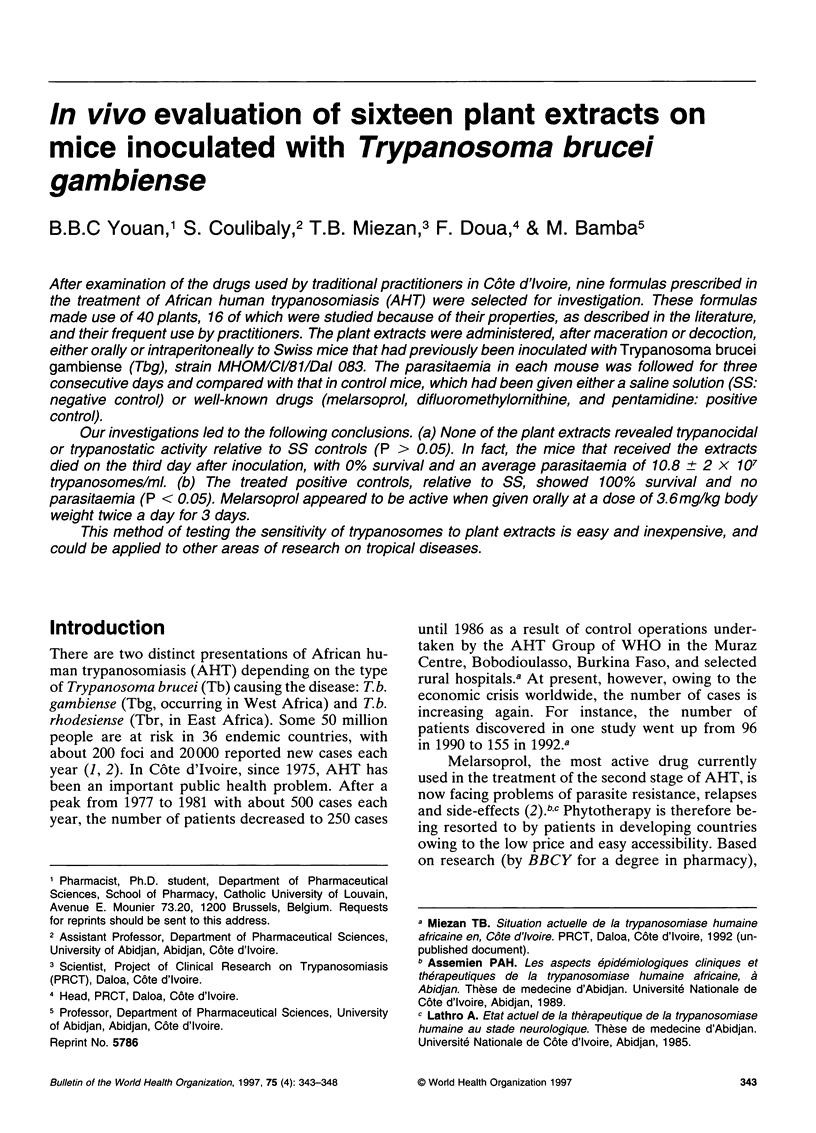
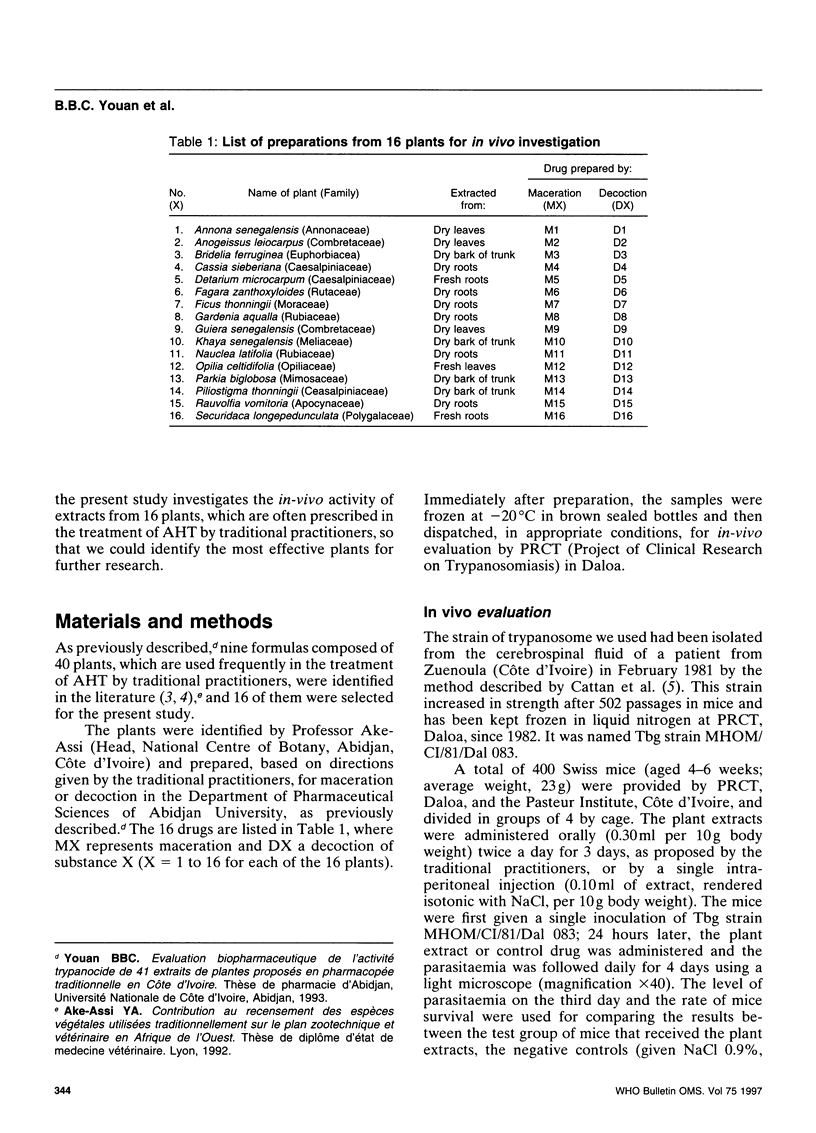
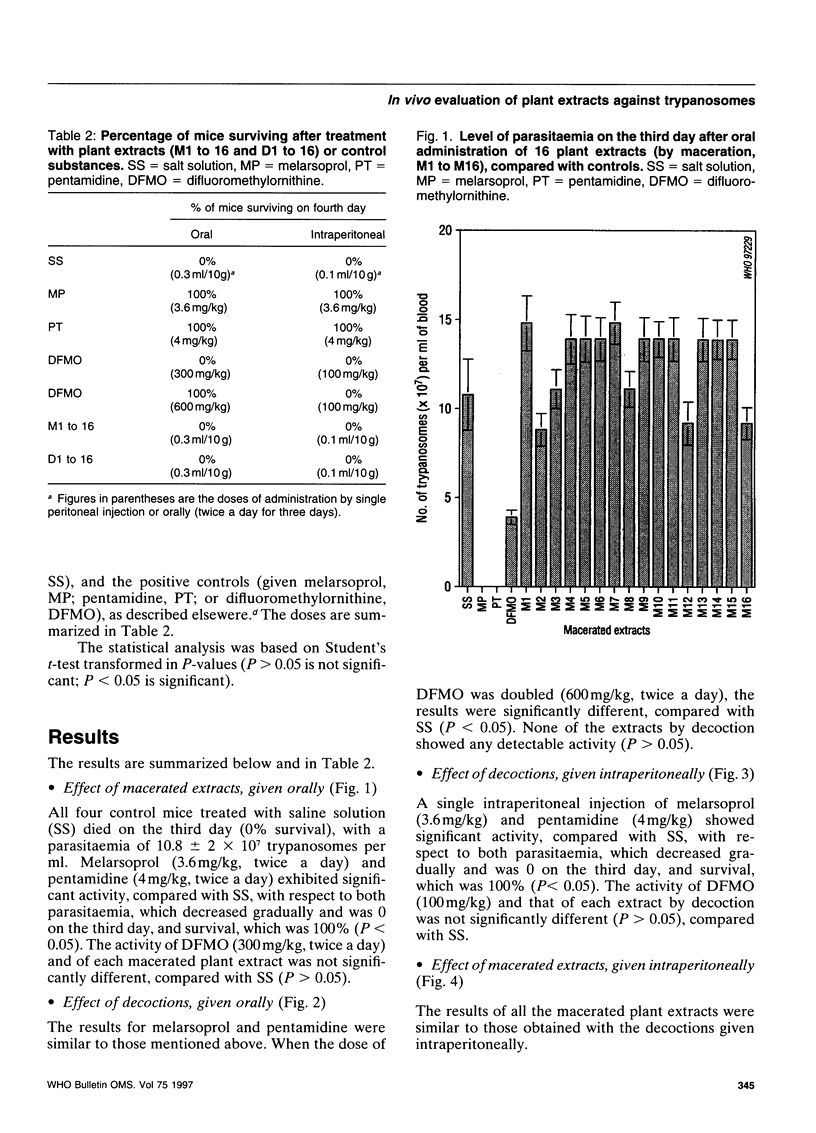
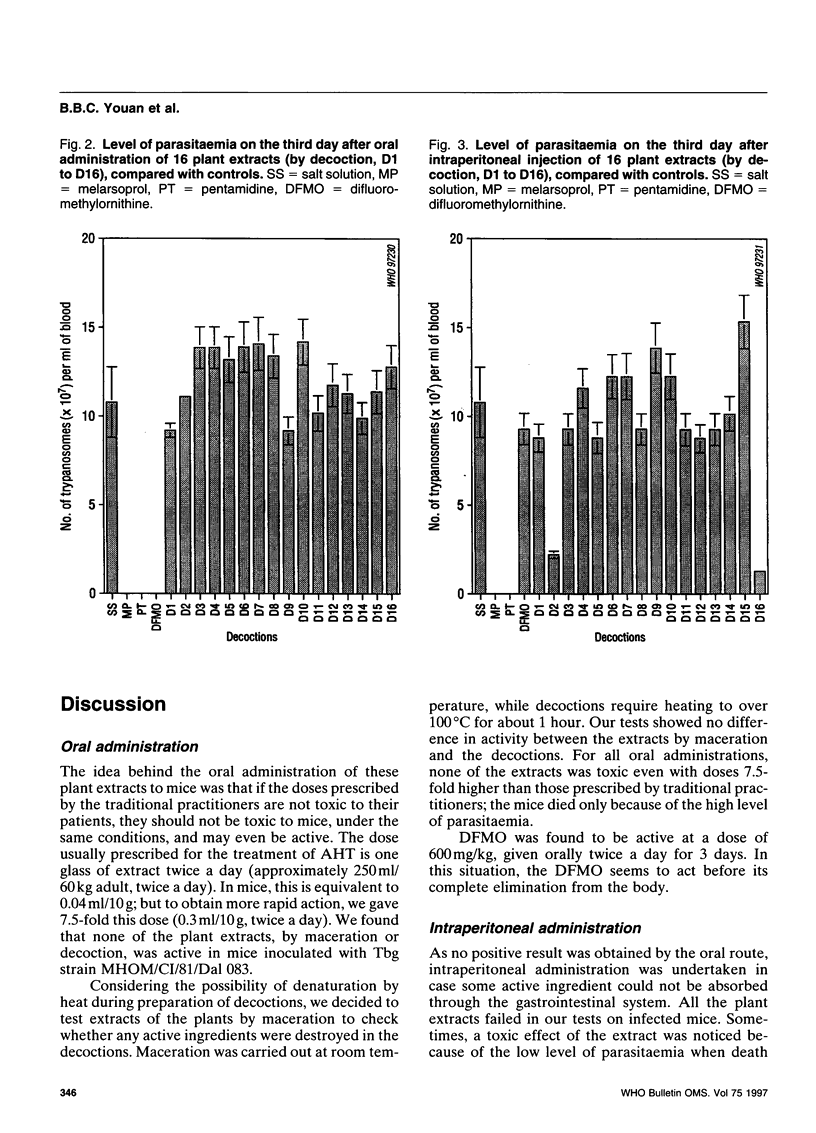
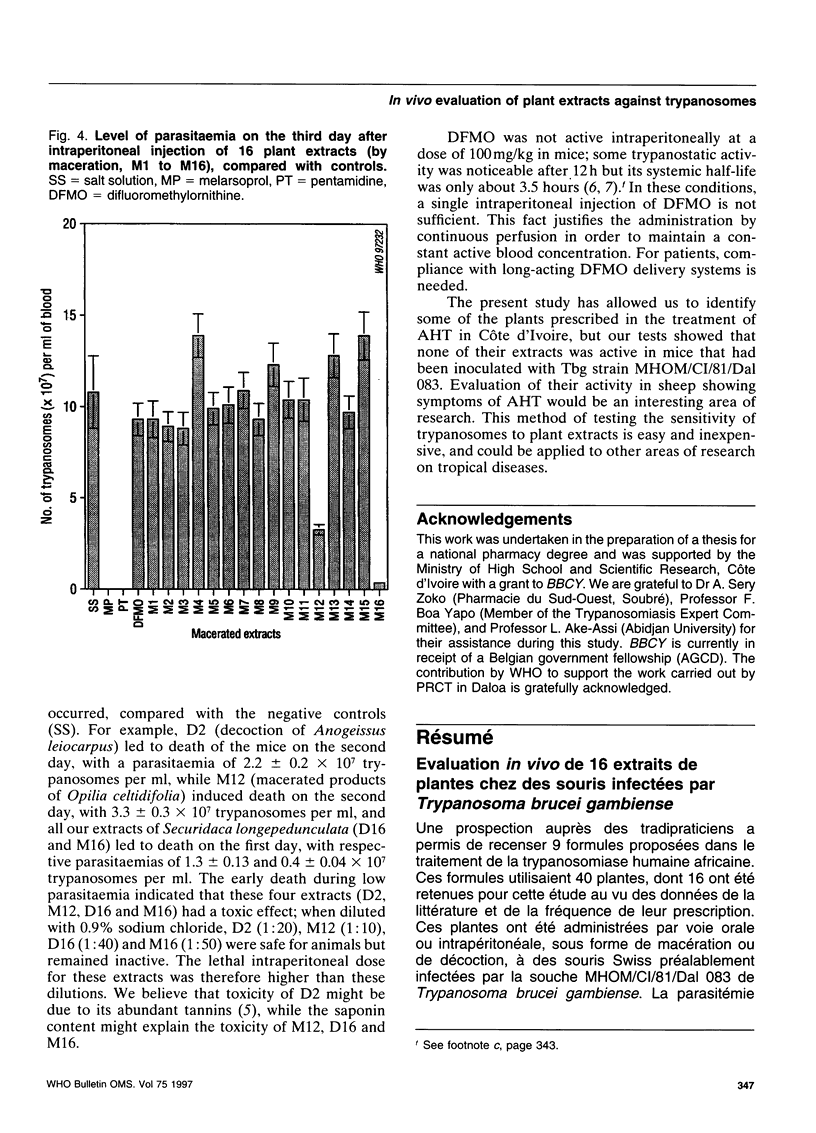
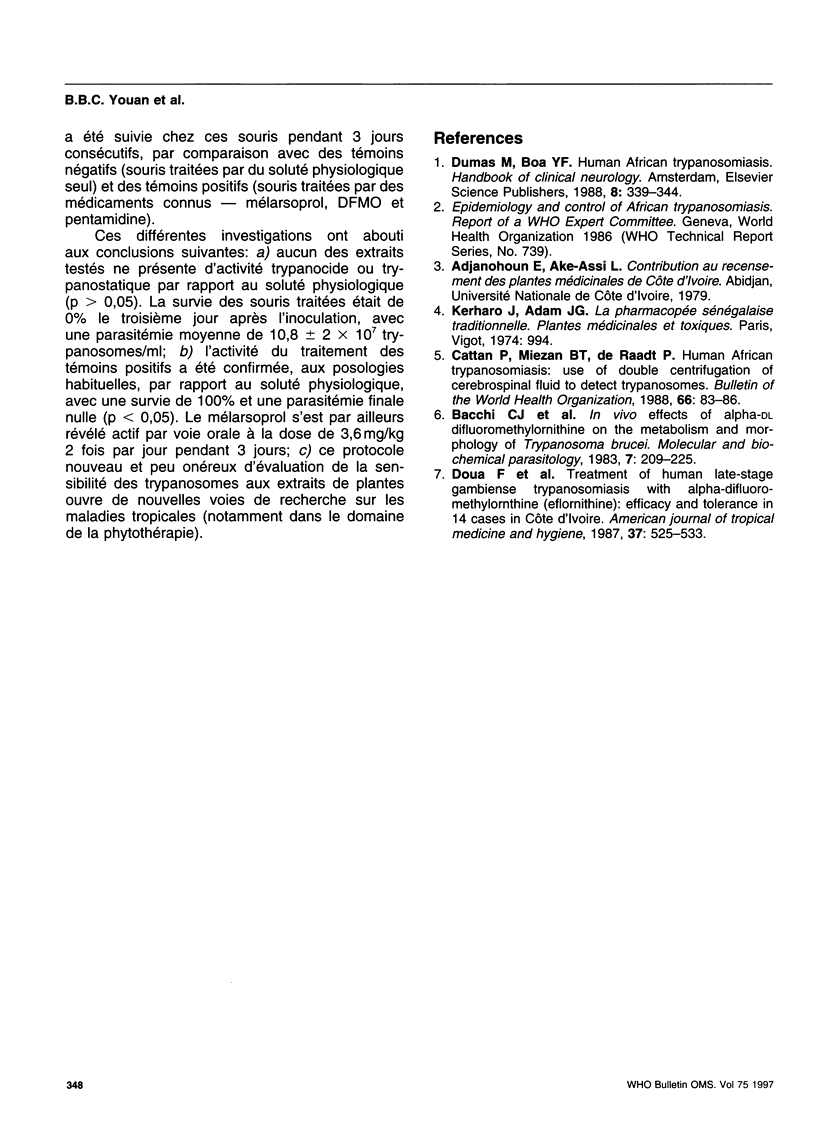
Selected References
These references are in PubMed. This may not be the complete list of references from this article.
- Bacchi C. J., Garofalo J., Mockenhaupt D., McCann P. P., Diekema K. A., Pegg A. E., Nathan H. C., Mullaney E. A., Chunosoff L., Sjoerdsma A. In vivo effects of alpha-DL-difluoromethylornithine on the metabolism and morphology of Trypanosoma brucei brucei. Mol Biochem Parasitol. 1983 Mar;7(3):209–225. doi: 10.1016/0166-6851(83)90022-1. [DOI] [PubMed] [Google Scholar]
- Cattand P., Miezan B. T., de Raadt P. Human African trypanosomiasis: use of double centrifugation of cerebrospinal fluid to detect trypanosomes. Bull World Health Organ. 1988;66(1):83–86. [PMC free article] [PubMed] [Google Scholar]


